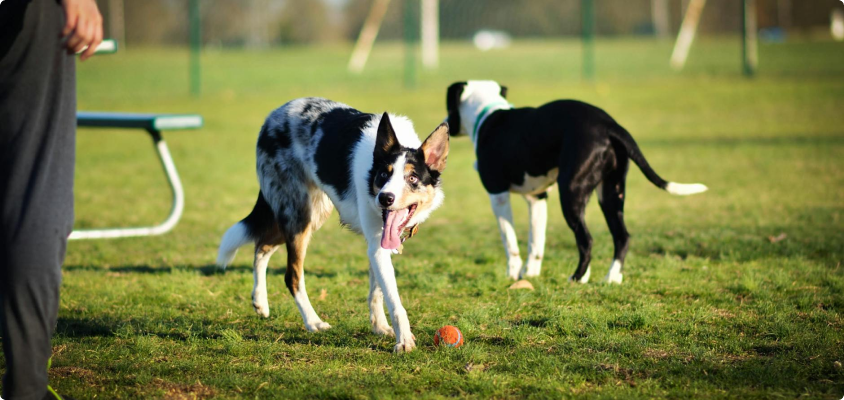
Establishing a healthy routine for your pet is essential for their overall well-being. A consistent routine not only supports physical health but also contributes to mental stability and a strong bond between you and your pet. Whether you have a dog, cat, or other animal companions, incorporating these elements into their daily life will ensure they thrive. Here’s a comprehensive guide on how to build a healthy routine for your pet’s well-being.
1. Set a Consistent Feeding Schedule
Feeding your pet at the same times each day helps regulate their digestion and metabolism. Establish a feeding schedule that works for both you and your pet, and stick to it. For dogs, this often means feeding them twice a day—morning and evening. Cats typically do well with multiple small meals throughout the day.
Choose high-quality pet food that meets your pet’s nutritional needs and follow the portion guidelines provided by the manufacturer or your veterinarian. Avoid free-feeding (leaving food out all day) unless specifically advised, as it can lead to overeating and obesity.
2. Incorporate Regular Exercise
Exercise is crucial for maintaining your pet’s physical and mental health. Establish a routine that includes daily exercise tailored to your pet’s needs and abilities. For dogs, this might involve regular walks, play sessions, or trips to the dog park. Cats can benefit from interactive play with toys, climbing structures, and laser pointers.
Exercise helps manage weight, improves cardiovascular health, and reduces stress. Adjust the intensity and duration of the activity based on your pet’s age, breed, and fitness level.
3. Create a Routine for Mental Stimulation
Mental enrichment is as important as physical exercise for your pet’s well-being. Incorporate activities that stimulate your pet’s mind and prevent boredom. For dogs, this could include puzzle toys, obedience training, or scent games. Cats enjoy interactive toys, puzzle feeders, and environmental enrichment like scratching posts and climbing shelves.
A mentally stimulated pet is less likely to engage in destructive behaviors and more likely to feel content and balanced.
4. Establish a Grooming Routine
Regular grooming helps maintain your pet’s hygiene and health. Establish a grooming routine that includes brushing your pet’s coat, trimming their nails, and cleaning their ears and teeth. The frequency of grooming will depend on your pet’s breed and individual needs.
For dogs with long or curly coats, regular brushing can prevent matting and reduce shedding. Cats also benefit from brushing, especially if they are prone to hairballs. Establishing a grooming routine helps prevent health issues like skin infections and dental problems.
5. Schedule Regular Veterinary Check-Ups
Routine veterinary check-ups are essential for monitoring your pet’s health and catching any potential issues early. Schedule annual or bi-annual visits to your veterinarian for wellness exams, vaccinations, and preventative care. Regular check-ups help ensure your pet stays healthy and receive necessary treatments or medications.
Discuss any health concerns or changes in your pet’s behavior with your vet, and follow their recommendations for maintaining your pet’s health.
6. Implement Consistent Training and Socialization

Training and socialization are crucial for your pet’s behavioral development and well-being. Establish a routine for basic training sessions, including commands like sit, stay, and come. Consistent training helps reinforce good behavior and strengthens your bond with your pet.
Socialization is equally important, especially for puppies and kittens. Expose your pet to various people, environments, and other animals in a positive and controlled manner. Proper socialization helps prevent fearfulness and aggression.
7. Prioritize Rest and Sleep
Adequate rest and sleep are vital for your pet’s recovery and overall health. Ensure your pet has a comfortable and quiet place to sleep, free from disturbances. Dogs and cats typically sleep between 12-16 hours a day, depending on their age, activity level, and health.
Provide a cozy bed or crate that suits your pet’s size and preferences. Avoid interrupting their sleep, and create a calm environment to support restful sleep.
8. Maintain Hydration
Access to fresh, clean water is essential for your pet’s health. Ensure that your pet always has access to water, especially during and after exercise or meals. Consider providing multiple water bowls around your home to encourage hydration.
For pets that are reluctant to drink, you can try a pet water fountain, which many animals prefer over traditional bowls.
9. Monitor and Adjust the Routine
A healthy routine should be adaptable to your pet’s changing needs. Regularly monitor your pet’s health, behavior, and energy levels to ensure the routine remains effective. Adjust feeding portions, exercise intensity, or grooming frequency as needed.
Be attentive to any signs of discomfort, illness, or behavioral changes, and consult your veterinarian if you have concerns.
10. Foster Emotional Well-being
Building a strong emotional connection with your pet is crucial for their overall well-being. Spend quality time interacting with your pet through play, affection, and positive reinforcement. Provide comfort and reassurance during stressful situations, such as loud noises or changes in routine.
A pet that feels loved and secure is more likely to thrive and exhibit positive behavior.
Conclusion
Building a healthy routine for your pet involves creating a balanced schedule that addresses their physical, mental, and emotional needs. By setting consistent feeding times, incorporating regular exercise, providing mental stimulation, and maintaining proper grooming and veterinary care, you ensure your pet’s well-being and happiness. Remember, a well-structured routine not only supports your pet’s health but also strengthens the bond you share with them. With dedication and attention, you can provide a fulfilling and joyful life for your beloved companion.